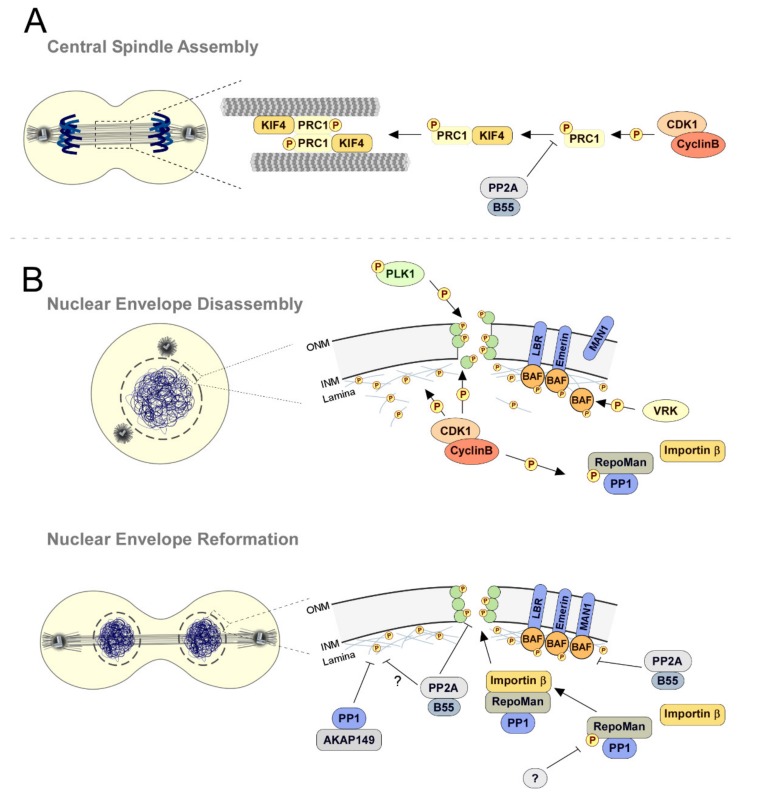Figure 7.
PP2A-B55 and PP1 activities orchestrate mitotic exit. (A) Formation of the central spindle during anaphase relies on the activity of PRC1. Phosphorylation of PRC1 by CDK1-Cyclin B precludes its microtubule bundling activity. Dephosphorylation of PRC1 is catalyzed by PP2A-B55 during anaphase and enables PRC1 interaction with the kinesin motor KIF4, its consequent translocation to the plus ends of antiparallel interdigitating microtubules, and the protein homodimerization required for its microtubule bundling activity and thereby for the assembly of the central spindle. (B) Reformation of the nuclear envelope and associated nuclear pore complexes around chromatin occurs at the end of mitosis. This requires removal of the multiple phosphorylations that were catalyzed during mitotic entry to promote the disassembly of the nuclear envelope and of nuclear pore complexes. During late anaphase/telophase, PP2A-B55-mediated dephosphorylation of BAF restores its interaction with chromatin and with components of the inner nuclear membrane (INM). PP2A-B55 might also target Lamin and several nucleoporins to direct their assembly into the nuclear envelope. Multiple pools of PP1 cooperate with PP2A-B55 to promote nuclear envelope reformation. AKAP149 localizes PP1 on the assembling nuclear envelope, where it dephosphorylates Lamin B to promote its polymerization and accelerate nuclear lamina assembly. Repo-Man targets PP1γ to the periphery of late anaphase chromosomes. The N-terminus of Repo-Man directly mediates the recruitment of Importin-β to control early nuclear envelope formation and nucleoporin deposition.

